Omaha Beach, Company E, H-hour 06:30
Similarly, the second attack company, E Company,[1] 16th Infantry Regiment of the 1st Division, met fierce resistance. They were still 500–600 yards from the beach when small arms and anti-tank guns opened fire on them. It was also clear to the well-oriented men aboard that they were coming in about 1,000 yards left of where they should be according to plans. How someone so clearly instructed and thoroughly trained could make such a mistake was incredible. The lonely house with the unmistakable outline that was marked Exit E 3[2] was on fire and clearly visible, but nonetheless the coxswains landed them in the wrong spot.
German machine gun bullets hammered the bow ramps as soon as the boats had landed. Aboard one of the boats, they were not able to get the ramp down right away. Four or five men pounded on it until it fell, and they tumbled out with it. They jumped into the shoulder-deep water under intense fire. One of the landing crafts took two direct hits from an anti-tank gun and was set ablaze. Weighed down with equipment, the men of Company E waded toward the beach. The deep water and heavy equipment hindered them from running, so they slogged along as quickly as possible.
It was a painfully slow march without any cover whatsoever against enemy fire, a fire that was extremely effective as it came from positions expertly placed along the knoll behind Omaha Beach. Many soldiers fell, and for each a lurid blush of red spread in the cold gray water. With intense flashes, men were blasted out of the surf when they stepped on underwater mines.
Those with life and limbs still intact staggered on through a nightmare of death and fire, their eyes burning from smoke, sweat, and tears. Some wept in despair. As they stumbled onto the beach, still dangerously exposed, many dropped into the sand out of sheer exhaustion, only to be forced to their feet again to fight the rapidly incoming tide that threatened to drag them back out to sea.
Men were wavering and falling everywhere. All Omaha Beach was on fire. The German guns, mortars, and machineguns, which everyone had thought were knocked out, raged against them. Especially bad was the fire that met troops who disembarked at each end of Omaha Beach. The Germans had concentrated their defense around the two very important exits of Vierville in the west and Colleville in the east.
All but one of the LCVPs in Captain Edward Wozenski's E-Company were subjected to heavy shelling while they were far out in the troubled sea. This one boat[3] with 32 men on board came in a little west of WN 62.
On board was Lieutenant Spalding, a lean, wiry 29-year-old man from Owensboro, Kentucky. His face was boyish under a thick mane of black hair. Although he had joined the army in 1941, he was inexperienced as a troop leader. His deputy, however, Sergeant Streczyk, from East Brunswick, New Jersey, had extensive combat experience. He had been with the 16th Regiment since North Africa. The 25-year-old sergeant was known for his common sense and bravery in battle.
Spalding stormed off the landing craft and into the water. The men followed closely and spread out in a V-formation at a width of about fifty yards. Streczyk, whose place was at the stern of the landing craft, ensured all the men got off and into the water. In some places they disappeared completely below. It was an exhausting battle to walk through the foaming water. It was still 200 yards to possible coverage on Easy Red, and a difficult undercurrent meant that they had to fight just to stay on their feet. The fire from the strongpoint in front of them was not as intense as might be expected.
Spalding disappeared below and swallowed seawater before he frantically fought his way up. Unproven, they avoided the beach obstacles that were rigged with mines on top. One of the men shouted that he was having difficulty moving with the flamethrower. It pulled him down because of the weight. Spalding called back that they should get rid of all equipment too heavy to carry.
All 32 men made it to the beach. Spalding noticed that the beach obstacles were intact. Not a single bomb had hit the beach. During the briefing of this section in England, he had been told that the navy and air force would make sure that everything was laid flat, and the beach would be dotted with craters. At the beach, along a single bank, the Germans had laid a barbed wire barrier that prevented further advance.
As if the Germans had been waiting for the very moment when they reached the beach, violent machine gun fire opened on them. It came from somewhere to their right. The Americans quickly put a Bangalore torpedo[4]in place and blew an opening in the barbed wire. One by one they ran through the breeze, zigzagging further over the rocky part of the beach towards a sea wall. They were a few hundred yards west of exit E-3. The fire came from a place to the right of them, where WN 64 was located.
***
The rest of E-company was put ashore in the wrong place, east of WN 62. They were exposed to deadly fire and suffered heavy losses. Captain Wozenski and his men were locked about a thousand yards east of where Spalding was. Any attempt to advance was stopped by machine gun fire. Wozenski discussed the situation face-to-face with his deputy, Lieutenant Duckworth, when Duckworth was shot through the forehead.[5]
The flood that came in brought with it countless dead and wounded. Around the dead bodies, the water was colored red. Wozenski and his men were in a desperate situation as they watched two landing crafts that came rushing in. Captain Wozenski knew that medical personnel were scheduled to land and feared that was who was coming in now. There was nothing he could do to help them. In the group of men around him, someone was constantly being hit. This was no desirable place to take cover.
The two incoming landing crafts hit a sandbar far out, and the landing ramps went down. The men on board stormed out and down the hatch. But they had not come halfway before they were brutally and violently cut down by machine gun fire. Cruel scenes unfolded before the eyes of the paralyzed soldiers trapped on the beach.
***
On the other side of the Colleville exit,[6] Spalding and his men took cover behind some ruins.[7] He had no idea where the rest of the company was. He called the company commander on his SC-536 walkie-talkie.
“Copper One to Copper Six.” Spalding listened with an ear pressed into the earphone as the din of battle was all around.
“Copper One to Copper Six.”
There was no response from Wozenski. Spalding looked at the radio and discovered it had been shot to pieces. Annoyed, he took the antenna down and put the radio back on the shoulder, as the petimeter he was. It was the property of the Army and should be handled with care.[8]
The ground around the ruins was mainly thick scrub, muddy marshland, and they could see the bottom of a ravine up the bluff. A German machine gun had now zeroed in on the men crouching behind the ruins. Spalding and Streczyk tried to figure out what to do while the projectiles hammered against the wall. What had happened to the rest of the company, they did not know. In front of them were some bog areas, which they assumed were mined. But they had to move on. German snipers, and eventually also mortars, would be able to pick them all off together.
They spotted a ravine that appeared to be relatively sheltered from fire. Spalding and Streczyk talked briefly and agreed that Streczyk should take a man and reconnoiter towards the ravine. Shortly after that Streczyk took off with Vice Corporal Richard Gallagher, while Spalding fired at the machine gun at the top of the hill to cover them.
Streczyk and Gallagher moved quickly out into the marshy area. After a short time, they discovered mines and changed direction into some dense thicket. Minutes later, Gallagher appeared. He waved at the others, and Spalding ordered the men forward. The machine gun continued to fire, but far more imprecisely. Spalding and his men remembered from previous studies of the sand model and aerial photos, that up on the hill there was an unfinished concrete bunker, which covered the western part of the Easy Red sector. The fire had to be coming from a trench near that bunker.[9]
As the Americans continued upward, they were again under fire. Vice Corporal Raymond Curley spun around and fell over, hit. The moment after, Sergeant Joseph Slaydon was also shot. Spalding waved forward Sergeant Hubert Blades, who had a bazooka. Spalding pointed to where he thought the shooter was and asked the sergeant to fire a rocket at the brink. Blades, an experienced veteran from three landings, aimed and fired, but missed. At the same moment, he was hit in the left arm just above the wrist. The sergeant seemed untouched, and satisfied Blades showed the injury to Lieutenant Spalding.
“Oh my God! Look, Lieutenant! Isn’t it beautiful? »
Blades was sure the wound would give him a ticket away from the front. Spalding could read the envy in the faces of the other soldiers.[10] Staff Sergeant Grant Phelps opened fire with his BAR and covered the ridge with projectiles. Spalding, Streczyk and several others stormed up the last bend to the German position and surprised a lone shooter. The man threw up his hands and shouted:
«Kamerad! Kamerad! »
Pure luck saved the machine gunner from being shot. Spalding needed the prisoner for questioning. It was soon discovered that the prisoner was not German, but Polish. Streczyk, who spoke fluent Polish, questioned the prisoner, and was told that 16 others were in the strongpoint to defend the flank. Unbeknownst to Streczyk, these were already taken out by others in their section, Sergeant Clarence Colson and his men.
At the head of G Company, Captain Joe Dawson, the company commander, was on his way up the hill. He glimpsed a figure on the brink and immediately recognized Lieutenant Spalding. The lieutenant smiled widely. Dawson and his men had landed twenty minutes after E-company and followed the same track.
In contrast to Spalding's and Streczyk's E-company, the G-company had suffered heavy losses on the beach─ 63 men, but the company was still well able to fight. Spalding was excited about whether Dawson had seen anything of the rest of E-company under Captain Wozenski. Dawson just shook his head. He knew nothing about Spalding's company commander.
After a quick consultation, they agreed that Dawson and his men should move directly over the destroyed machine gun and towards Colleville-sur-Mer, which was the nearest village. Spalding and his men were to move west towards WN 64 and exit E-1 at Saint- Laurent-sur-Mer. Before they started, they fired a yellow signal flare, to announce that they were up on the hill. Both Dawson, Spalding and Streczyk were little aware of the overall situation. Their breakthrough was limited and vulnerable to possible counterattacks.


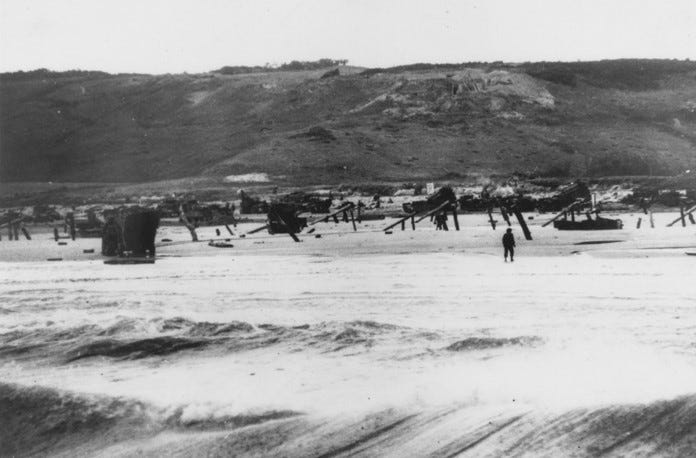
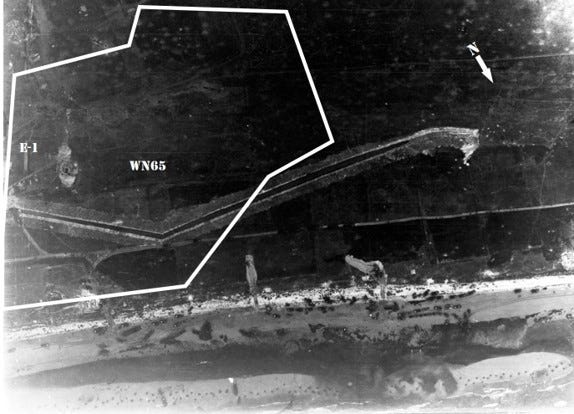

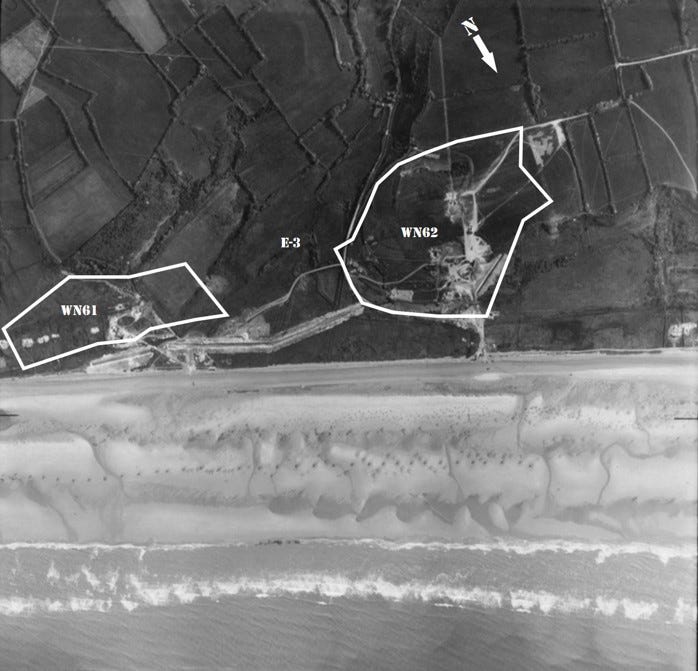
***
East of Spalding and his group Captain Edward Wozenski and his men started to move cautiously along the beach. Smoke from a burning tank, a landing craft in full flame, and smoke from the fighting that now raged along Omaha Beach gave them some cover. Despite all the smoke, Wozenski caught sight of a yellow signal flare rising over the hill a good distance away. The experienced captain was sure it was one of his men who had sent it to signal they had made it up the hill.
Wozenski acted quickly. The flare appeared around a thousand yards further west. From their current position it was not possible to get up the hill, so he gathered the able-bodied. Wozenski took six men with him and went along the beach until he was below where he had seen the signal flare shoot up. They found the breach in the barbed wire, where Spalding and his men had blasted an opening, and took the same path up the hill.
[1] Combat Interview Company E, 16th Infantry, 1st Infantry Division, Omaha Beach June 6 1944
[2] Exit Easy 3
[3] Section no 1 led by Lieutenant John Spalding and his Deputy Tech. Sergeant Philip Streczyk. Combat Interview Co. E, 16th Inf. Regt., 1st Inf. Division
[4]A long metal pipe filled with explosives that is used to pave the way in barbed wire barriers..
[5] Imperial War Museum, Sound Archives
[6] Colleville Draw, Exit E-3
[7] US soldiers called it “Roman Ruins.”
[8] Pogue’s War. Diaries of a WWII Combat Historian by Forrest C. Pogue.
[9] WN 64
[10] History Net.com A Knife in the Vitals: Omaha Beach by John C. McManus




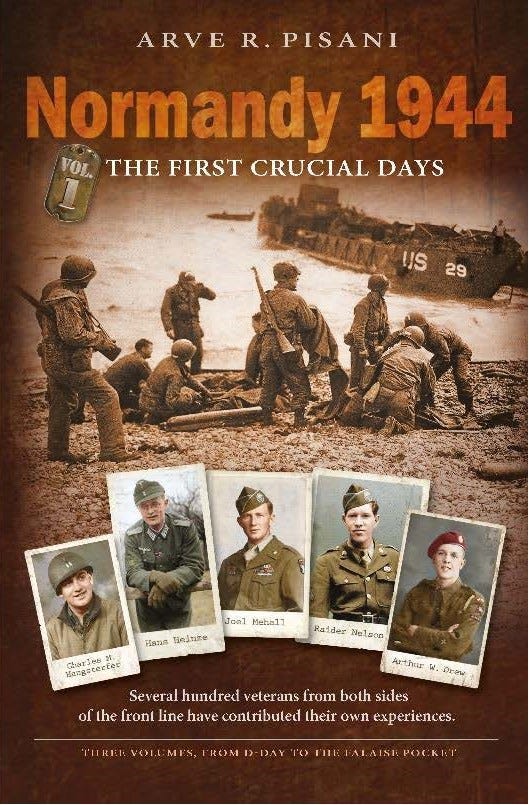
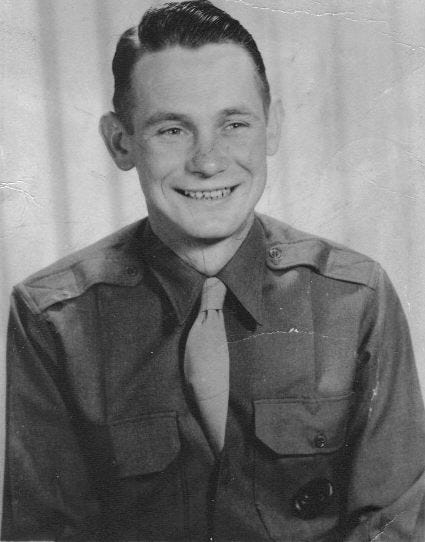
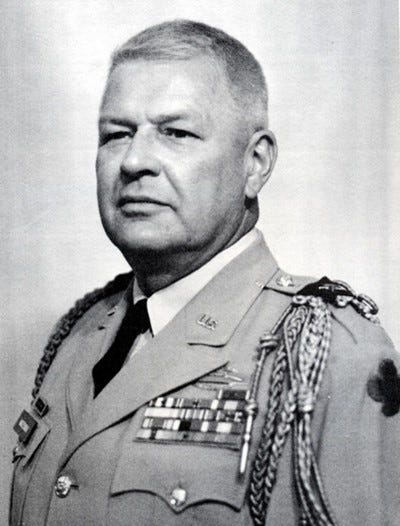
I really look forward to your riveting description of the unfolding Battle of Normandy. First class history.